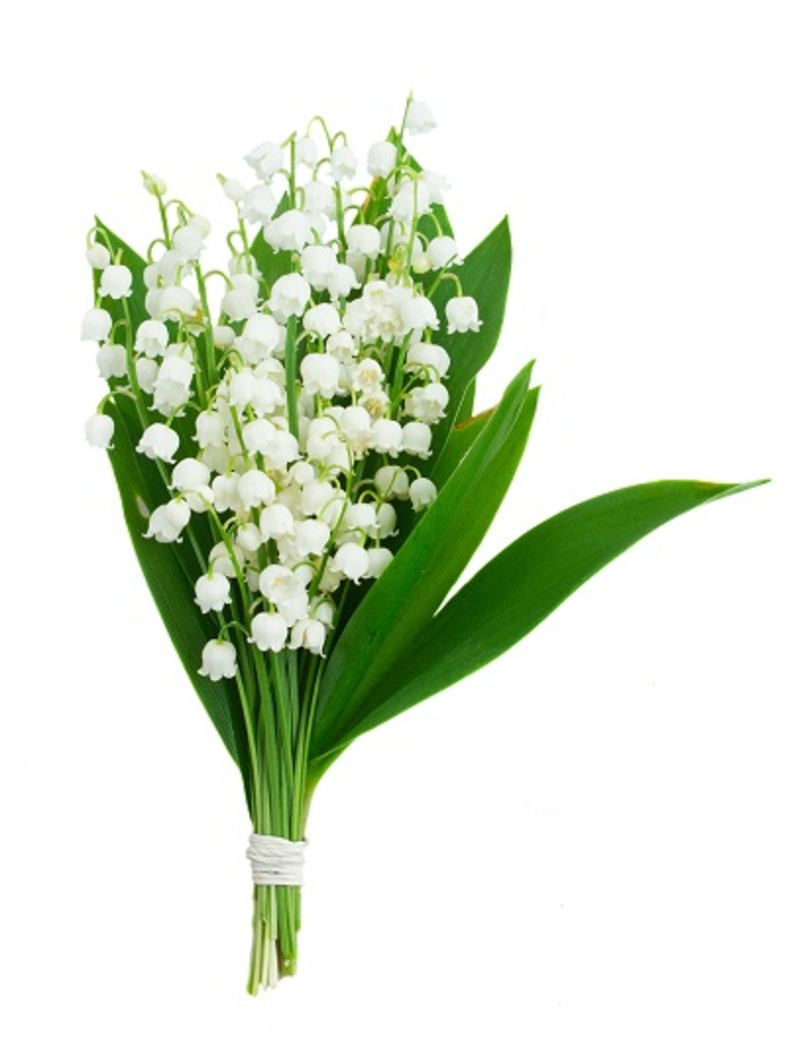7 Amazing Tulip Facts That Will Ignite Your Curiosity
Posted on 01/09/2025
7 Amazing Tulip Facts That Will Ignite Your Curiosity
Tulips are among the world's most beautiful and beguiling flowers, symbolizing spring with their stunning array of colors and elegant shape. Beyond their beauty, tulips have a fascinating story -- from cultural significance to quirky historical events. Whether you are a gardening enthusiast, flower lover, or history buff, these amazing tulip facts will spark your curiosity and deepen your appreciation for these iconic blooms. Read on to discover incredible truths behind the delicate petals and vibrant hues of tulips!
1. The Surprising Origins of Tulips
When you think about tulips, you might immediately picture fields of colorful tulips in the Netherlands. But did you know these gorgeous flowers did not actually originate there?
Turkish Origins
- Tulips originated in the region now known as Turkey and Central Asia, particularly in the wild mountainous areas!
- The name "tulip" is derived from the Persian word for "turban" due to the flower's turban-like shape.
- During the Ottoman Empire, tulips became a symbol of abundance and indulgence. Royal gardens were overflowing with hundreds of varieties, and tulips were often featured in poetry, art, and clothing.
This connection between tulips and the Middle East may surprise many who only associate them with Dutch landscapes. In fact, it wasn't until the 16th century that botanist Carolus Clusius brought tulip bulbs from Turkey to the Netherlands, starting a horticultural revolution that forever altered the world's floral history.

2. Tulip Mania: The First Economic Bubble
One of the most intriguing tulip facts is their infamous role in creating one of the world's earliest recorded economic bubbles, known as Tulip Mania. In the early 17th century, tulip bulbs became so wildly popular and rare in the Netherlands that their price soared to unprecedented levels.
The Craze That Shook an Economy
- At the height of Tulip Mania (1634-1637), a single tulip bulb could sell for more than a house!
- People from all walks of life speculated in tulip futures, buying contracts for bulbs they'd never actually see -- hoping prices would continue to rise.
- By 1637, prices crashed, causing financial ruin for many. The tale of Tulip Mania is often cited as an early example of the dangers of market speculation.
This historical event remains a powerful symbol of how trying to "get rich quick" can sometimes end badly -- even if the bubble is built around a beautiful flower!
3. The Language of Tulips: Symbolism and Meaning
Flowers have always been associated with emotions and symbolism, and tulips are no exception. These blooms hold a wide range of meanings in different cultures, making them perfect for expressing feelings of love, trust, or even apology. Some cultures even assign specific sentiments based on tulip color.
What Do Tulip Colors Mean?
- Red tulips: Deep love and perfect passion, often given to romantic partners
- Yellow tulips: Cheerfulness, sunshine, or sometimes unrequited love
- White tulips: Purity, forgiveness, and a fresh start
- Purple tulips: Royalty and elegance
- Pink tulips: Affection, happiness, and caring
- Multicolored tulips: "You have beautiful eyes" -- a sweet sentiment!
Tulips communicate emotions without words. Their classic shapes and vibrant colors make them a favorite choice for bouquets, wedding decorations, and special occasions. Next time you give or receive a tulip, remember -- its color tells a story!
4. Tulips in Art, Literature, and Popular Culture
Tulip flowers have inspired artists, writers, and designers for centuries. You'll find their elegant forms gracing centuries-old paintings, modern photography, and even luxurious textiles.
Tulips Through Time
- During the Ottoman Empire, tulip motifs were a favorite subject for ceramics, carpets, and miniatures.
- Dutch Master painters like Jan Brueghel and Rachel Ruysch showcased tulips in lush, symbolic still-lifes.
- Tulips have appeared in classic works of literature, such as The Black Tulip by Alexandre Dumas, a novel centered around the quest to grow an elusive black tulip.
- Modern designers use tulip shapes in everything from furniture (like the iconic "Tulip Chair") to jewelry and even inspirational tattoos.
Tulips have left their mark not only on gardens, but on creativity worldwide, continuing to inspire minds and delight the senses.
5. The Science Behind Tulip Colors
Have you ever wondered what gives tulips their dazzling range of colors? The secret lies in chemistry and genetics.
Nature's Masterpiece
- Tulip colors come from two major plant pigments: anthocyanins (blue, red, purple hues) and carotenoids (yellow, orange, and red).
- Some of the most dramatic streaked or variegated tulips were originally caused by a virus -- the "tulip breaking virus" -- which disrupts the pigments and produces flamed or feathered patterns.
- Today, breeders carefully select and hybridize tulip varieties to create new shades and patterns, giving us thousands of unique types to enjoy.
Tulips are not just a visual delight -- they are also a testament to the marvels of plant science and the artistry of gardeners throughout history.
6. Tulips Around the World: Cultivation and Festivals
Tulips are celebrated globally -- and not just in the Netherlands. From vast commercial farms to local festivals, the world's love affair with tulips crosses borders and continents.
Tulips in the Netherlands
- The Netherlands is the world's largest producer and exporter of tulip bulbs -- growing over 4 billion bulbs every year, and shipping them across the globe!
- Famous destinations like Keukenhof Gardens near Amsterdam display more than 7 million tulips each spring, drawing visitors from all over the world.
International Tulip Festivals
- Canada: The Canadian Tulip Festival in Ottawa celebrates the gift of tulip bulbs from the Netherlands after World War II, attracting more than half a million visitors annually.
- United States: Events like Skagit Valley Tulip Festival in Washington State and Tulip Time in Holland, Michigan, feature sprawling fields, parades, and folk traditions.
- Turkey: Istanbul Tulip Festival honors the flower's historical home with millions of blooms in parks and public squares each April.
- Other countries such as Japan, England, and Australia also hold their own tulip festivals, celebrating the beauty and optimism that tulips represent.
Wherever they're grown, tulip festivals draw crowds to marvel at the blooms, celebrate local culture, and welcome the springtime.
7. Fascinating Tulip Varieties and Records
Did you know there are over 3,000 registered tulip varieties? From classic cup shapes to dramatic fringed edges and unusual colors, the diversity of tulip blooms is astounding.
Mind-Blowing Tulip Facts
- The oldest cultivated tulip variety is thought to be the Lac van Rijn, dating back to the 17th century!
- The rarest tulip colors include deep blue and true black, though breeders have come very close to achieving these shades through plant science and hybridization.
- The world's tallest tulip ever recorded was a whopping 2.74 meters (over 9 feet) tall, grown in the Netherlands in 2007.
- Special types, like parrot tulips with feathery petals and double tulips resembling peonies, add to the fascination.
Whether you're drawn to classic red tulips or exotic multicolored hybrids, there's a tulip variety to suit every taste and garden.

Bonus: Tulips as Edible and Medicinal Plants
Here's a curious fact you may not know: During times of hardship, such as World War II, tulip bulbs were sometimes used as a food source in the Netherlands! Cooked tulip bulbs can be eaten (though only under expert guidance, as many varieties are bitter and not truly edible).
- Some historical records suggest tulip petals have also been used as decorations on cakes or salads.
- In folk medicine, tulips were occasionally believed to have properties for treating coughs or skin irritations.
While we wouldn't suggest adding tulips to your diet today, their role in history highlights just how resourceful and significant these flowers have been for people across the ages.
Conclusion: Tulips -- More Than Just a Pretty Flower!
The world of tulips is full of surprises, from their dramatic history and economic impact to their rich symbolism and mesmerizing colors. These amazing tulip facts remind us that every flower tells a story -- about culture, science, nature, and art. Whether you experience tulips in a sprawling festival, a home garden, or a simple vase on your table, you're participating in a centuries-long tradition of admiration and awe.
So next time you see a vibrant tulip bloom, pause and marvel at its extraordinary journey through history and across continents. Let these fascinating tulip facts ignite your curiosity and inspire you to explore even more about the world of flowers!
Want to Learn More?
For gardening tips, tulip care guides, and the latest in floral news, explore our other articles on tulip species, flower arrangement ideas, and festival highlights. The story of tulips continues to bloom -- join the adventure!
Latest Posts
3 Essential Ways to Extend the Freshness of Your Bouquets
7 Amazing Tulip Facts That Will Ignite Your Curiosity
Flourishing Orchids: A Care Strategy






